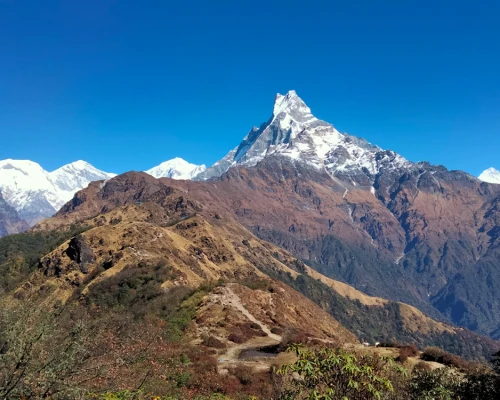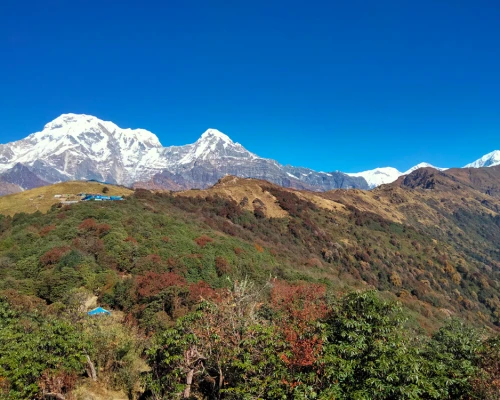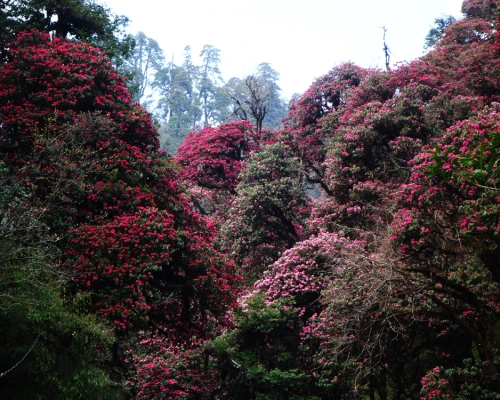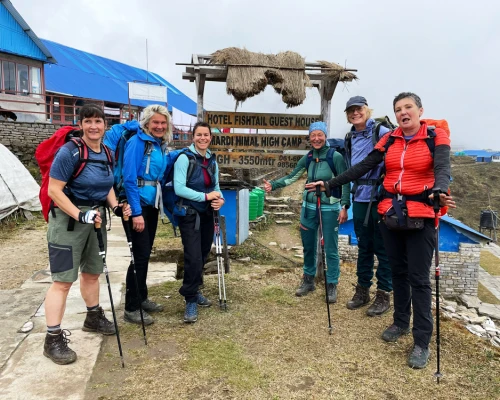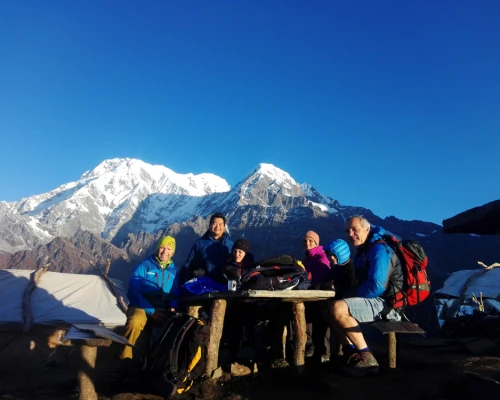Mardi Himal Trekking

Mardi Himal trekking is an Eco-tourism trekking destination newly opened trekking trail in the Annapurna region. It is a known short and easy travel destination, from which you can spy deeply into the massive Himalayas. Mardi Himal hiking offers you the panoramic dominant views of Mountain peaks like Annapurna I, II, III, IV, Annapurna South, Hiuchuli, Dhaulagiri, Machhapurchhare, Lamjung, and to Manaslu ranges. The emphasis of the Mardi Himal trek is on the forest, wilderness, villages, and mountains. This is designed to provide outstanding mountain views, glacier views, the Annapurna Sanctuary wall, the Machhapuchhre BC gorge, the Modi River gorge, and yak pastureland in a short time up to the mountain skyline. This trek doesn’t need any previous experience of adventure and high altitudes because every precaution will be taken to ensure gradual and thorough acclimatization during the trek to the mountain.
Difficulty of Mardi Himal Trek
Trekking in Mardi Himal High Camp is considered a moderate off the beaten path trekking. This trek is not difficult and exhausting; it is always full of paradise and panoramic views. Of course, the trail in the Himalayas is a long way up and a long way down, several staircases, but full of natural and cultural attractions. You will have plenty of good places for short breaks whenever you get tired or want to take nice pictures. Everyone can make this trek by following the method of “go slower, drink enough water, never be in a hurry, get higher, and sleep at a lower”
Permits & Regulations for Mardi Himal Trek
You need to have two different kinds of permits for this trek, such as the Annapurna Conservation permit and the TIMS permit.
Best Time to Trek in Mardi Himal
Mardi Himal route can be trekked year-round, but the spring (March to May) and autumn (September to November) seasons offer the best conditions:
Autumn (September - November): Widely considered the best time. The weather is generally stable, with clear skies, comfortable temperatures, and excellent mountain views. Trails are not dusty, and the nights are clear for stargazing. However, it's very crowded.
Spring (March - May): Another excellent period. You'll witness blooming rhododendrons and other wildflowers, with pleasant temperatures and good visibility. Crowds are generally slightly less than in autumn.
Winter (December - February): Possible for trekking but challenging. The higher elevations will be covered with high snow and can be extremely cold. The pass might even be closed due to heavy snowfall. Requires extra gear (warm layers, crampons, thick sleeping bag) and an experienced guide. Offers a more secluded experience with pristine snowcaps.
Monsoon (June-August): We do not recommend this trek due to heavy rainfall, muddy and slippery trails, river streams will be flooded, limited visibility, and the risk of landslides. Some lower sections might be trekked, but the high pass is generally avoided.



